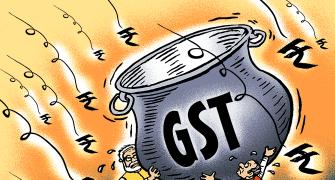The specifics will also cover what’s fit and proper to be a chest manager; the insurance and re-insurance aspects; and the new capital threshold, which is Rs 100 crore now.

The Reserve Bank of India (RBI) has kickstarted exploratory talks with banks and cash logistics companies (CLC) on processing cash-in-transit (CIT) outside of the Jurassic-age currency chest management system.
It is part of a larger plot, which will eventually help banks discard the considerable burden involved in handling huge amounts of cash and stick to their core operational area as is done in matured economies.
Sources familiar with the developments told Business Standard that Mint Road is engaged with the industry on the subject, but said it will be sometime before the specifics involved CIT - the charges sought to be levied by CLCs on banks - are frozen.
The timeframe by which these players are to become full-blown currency chest managers for banks is also being discussed.
The specifics will also cover what’s fit and proper to be a chest manager; the insurance and re-insurance aspects; and the new capital threshold, which is Rs 100 crore now.
Incidentally, CLCs have written to the central bank a fortnight ago to seek an extension to achieve this threshold by two years (2020) and in a staggered manner.
“It’s a big reform. It is at the early policy stage and the procedural matters will kick in later”, said a source.
"RBI’s executive director (ED) Deepak Mohanty was the “lead” in talks with chief general manager, department of currency management, Ajay Michyari in tow; it is speculated that Parvathy Sundaram who is also an ED may take over discussions from Mohanty here on.
The to-be registered self-regulatory body, Cash Cyclers’ Association will also be part the game.
The RBI’s Annual Report for 2016-17 says the value of banknotes in circulation fell by 20.2 per cent over the year to 13,102 billion as at end-March 2017, but volumes (pieces) went up by 11.1 per cent to 100,293 million pieces due to the higher infusion of lower denomination notes post-demonetisation.
It would be erroneous to view the lower denomination as a one-off driver of volumes.
At end-March 2016, the value of notes in circulation stood at 16,415 billion, up by 14.9 per cent with volumes up by 8 per cent at 90,266 million pieces, which has been the secular trend. CLCs put the daily amount carted to “feed” 240,000 ATMs at a run-rate of thrice a week plus what’s transported from the chests among and within banks at Rs 10,000-12,000 crore.
As on date, currency moves from the security presses to the RBI’s vaults (95 per cent of the stock) or to the chests of banks: some 4,000-odd (including sub-treasury offices and an RBI chest at Kochi) for a tad over 125,000 bank branches; 19 issue offices; and 3,707 small coin depots of commercial, cooperative, and regional rural banks.
The mint-fresh comes to reside (at some point) in the chests wherein it forms part of banks’ cash and balances held with Mint Road; and gets accounted for towards the cash reserve ratio, basically their liquidity defence line.
But currency management in the form it is now also dissipates capital and pushes up costs - as banks are to sort and bundle notes; move it to their branches from the chests’ premises; and pay their staff and the CLFs to carry out the work.
It’s huge: A branch will seek Rs 100 million from its currency hub, and before close of business hours, put it back into the chest (less the amount thrust again into circulation) so that it can continue to be in the commune of RBI’s cash and balances.
The paradigm sought to be crafted will get rid of the wastage in costs and manpower; and add to the velocity of money - fresh and clean notes will always remain in circulation, as it cuts down the back and forth from the chests to branches; and only the soiled and, or damaged will go back into the chests which will then be redirected back to the central banks’ offices wherein they will be shredded.
The cost incurred toward printing notes (it went up to Rs 7,965 crore in 2016-17 from Rs 3,421 crore in 2015-16 on new currency printing post note-ban) is expected to fall over time.
The tricky part is the reaction of bank unions, especially with reference to the clerical staff in state-run banks - it can be a political hot potato given the din over the lack of jobs in the run up to the elections in May 2019.
Photograph: Shailesh Andrade/Reuters










